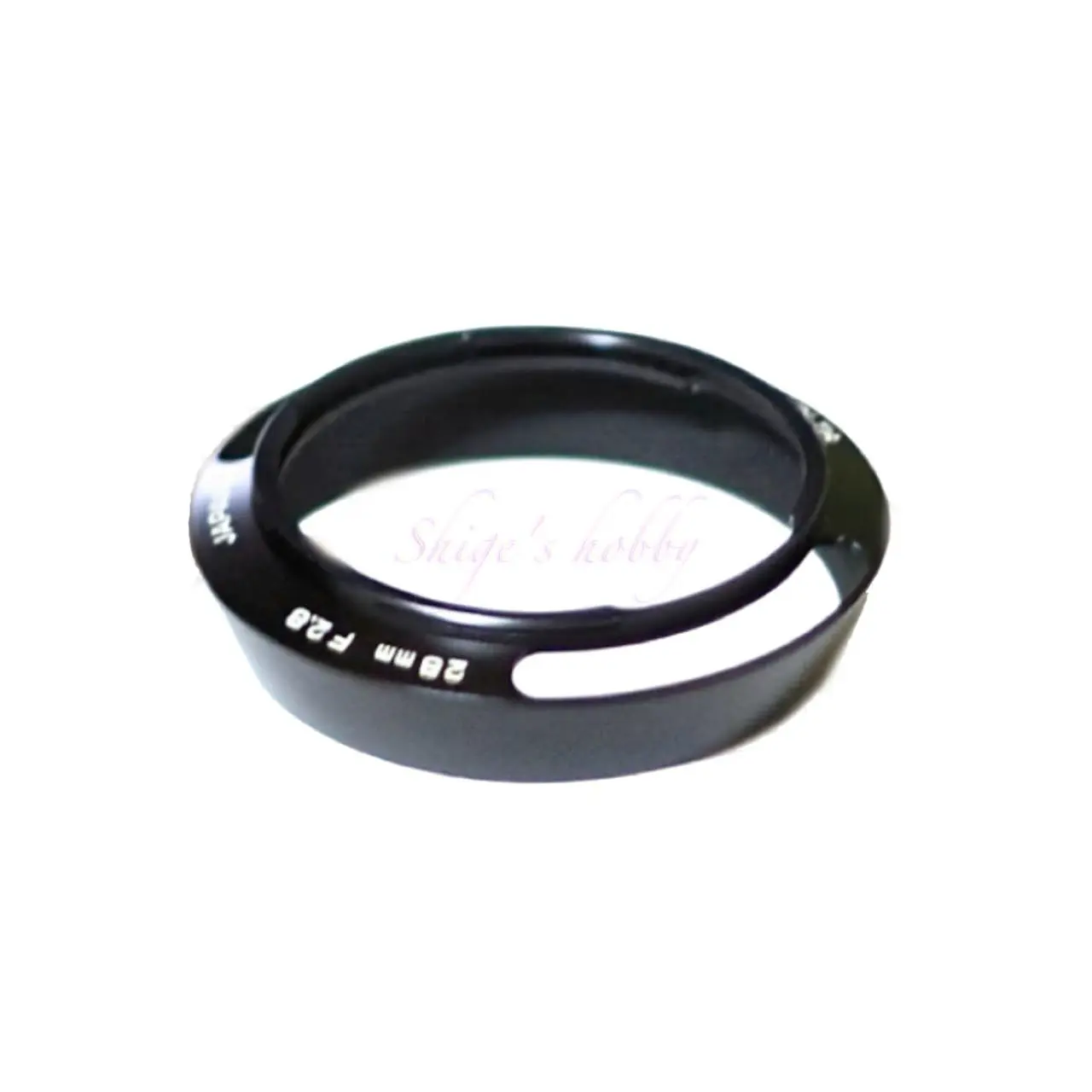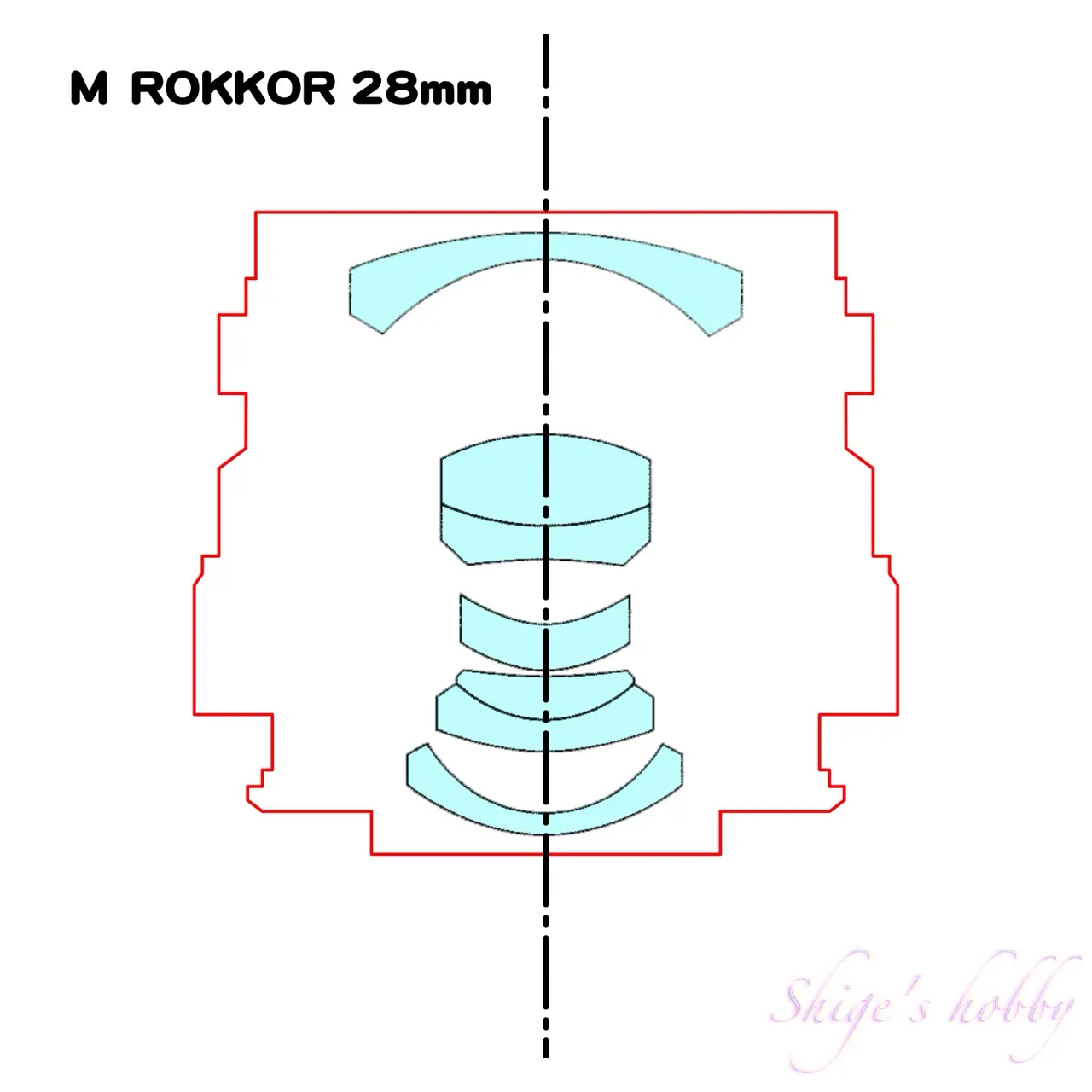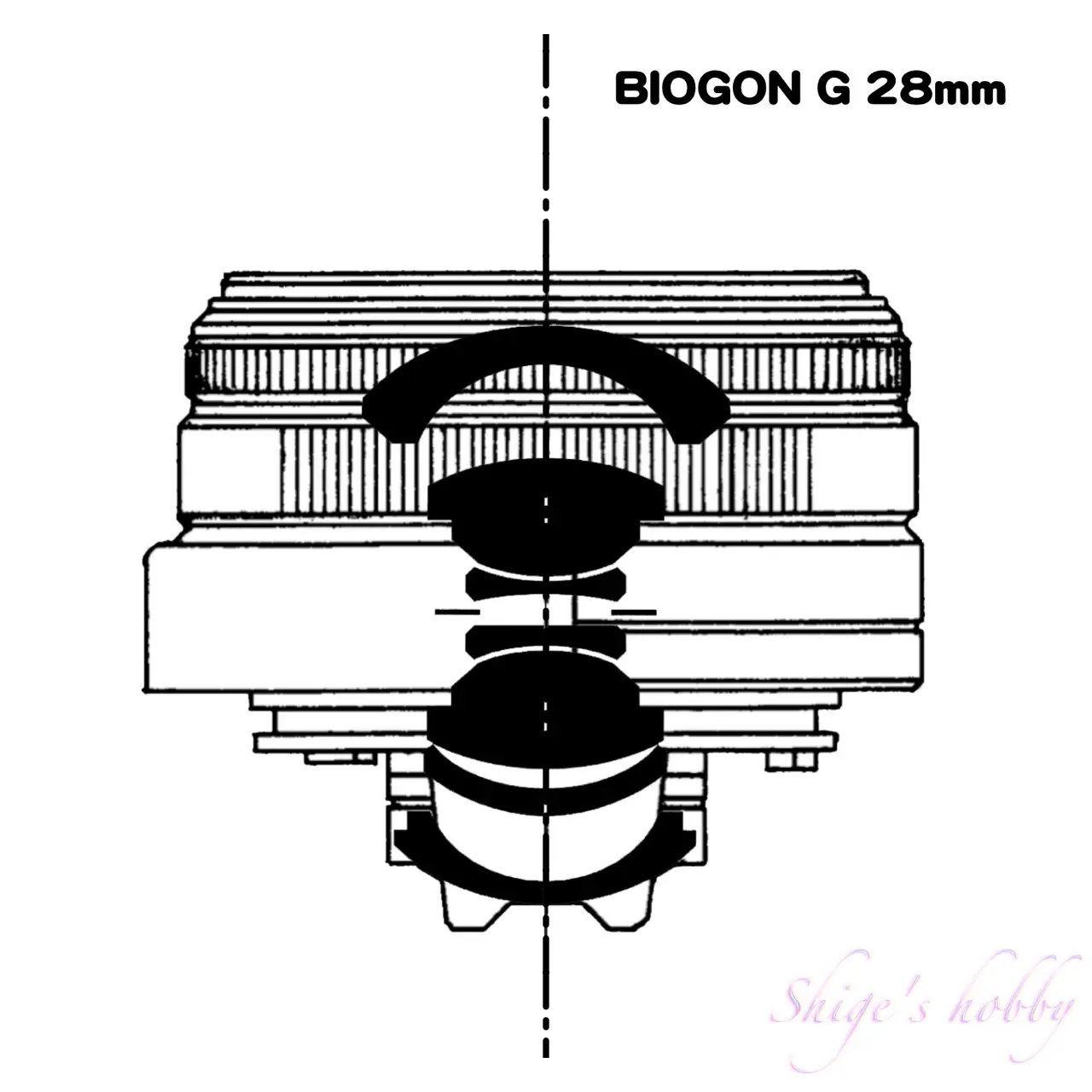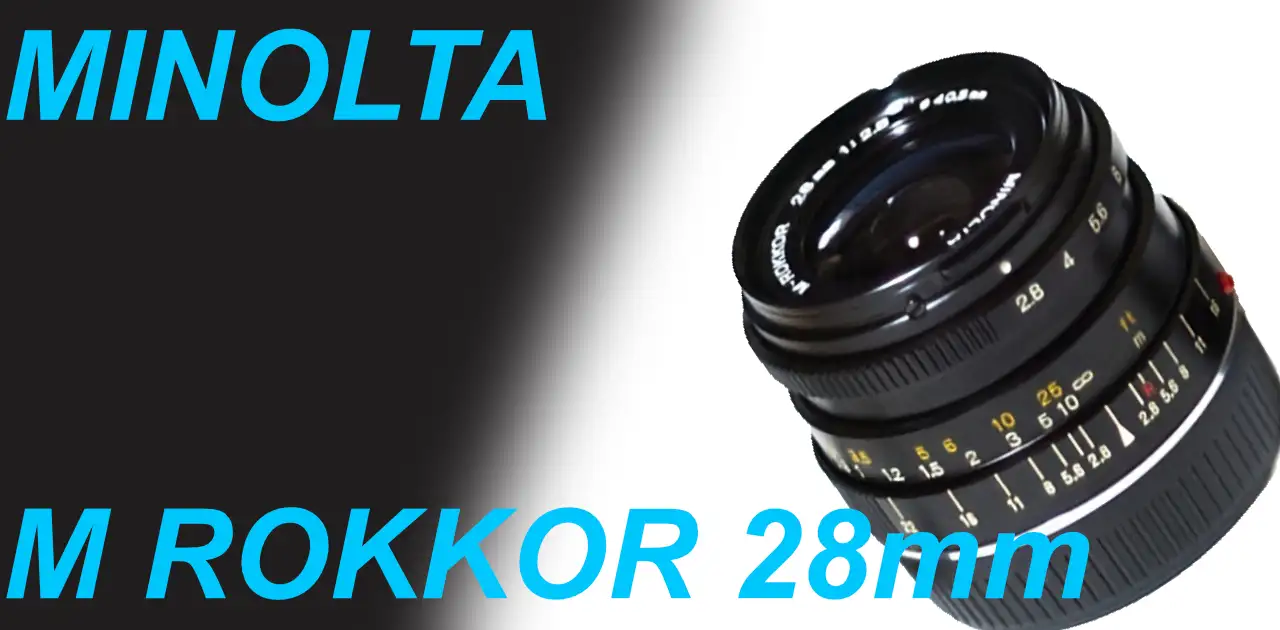Last updated on 2025-08-14
LEICA M9、M8、HEXAR-RFでMINOLTA M ROKKOR 28mm F2.8・ライカMマウント互換レンズを使用したレビューと写真作例
- 本サイト表示の広告詳細は本リンク先に記載、本文中斜め文字のリンクはアフィリエイトリンク
目次
ギャラリー
写真作例の撮影は以下のカメラを使用した。
レビュー


1.概要
M ロッコール 28mmは、1981年にミノルタが自社のレンジファインダーフィルムカメラ・MINOLTA CLE用に開発したライカMマウントの広角レンズ。
主な仕様は以下の通りで、詳細は表に載せている。
- 開放F値 2.8
- レンズ構成 5群7枚
- 絞り羽根 10枚
- 最短撮影距離 0.8m
- ライカMレンジファインダーカメラ距離計連動 0.8m
- フード 専用バヨネットフード
- レンズカラーバリエーション ブラック
専用フードは金属製で材料の肉厚が薄いため、使用中に歪みやすく中古では歪んだフードを見かけることもある。
2.使用感
M ロッコール 28mmの操作性は、鏡筒に適度な大きさの指かかりがあり、フォーカス操作はスムーズにできる。レンズ前方にある絞り環も適度なクリック感で気持ちよく操作ができる。
また、後玉のフィルム、センサー面への飛び出しも少ないため、マウントアダプターを使用してMマウントカメラ以外のカメラへの利用に不安が少ないことも良い点だ。
LEICA CLEに装着すると、コンパクトな広角スナップカメラとして使用することができ、このコンビネーションは完成されたカメラと言える。カメラ、レンズともに外観は少しチープだが写りに関してはレンズ状態がよければよく写る。
レンズ硝材、バルサム材のためかレンズが曇りやすいのが弱点で、中古市場で見かける価格の安いレンズはほぼ曇りがあるレンズになる。このレンズが現役時代には、ミノルタがそれを修理したレンズがあり、それは曇りづらいレンズだが中古レンズの常で状態の良いレンズは高価になりがちだ。
レンズは和製エルマリート28mmなどという若干失礼な異名で呼ばれることもある。
CLE用のレンズは、28mm、40mm、90mmの3本でシンプルなラインナップである。
普通の撮影者であれば3本で大抵の用途に対応できるだろうし、ファインダー枠の問題はあるがCLEはMマウント互換なので他社レンズが使えるためレンズ遊びは困らない。ミノルタをはじめ日本の古いレンジファインダーカメラ、レンズを提供していたメーカーはレンズラインナップがシンプルであった。
ライカとキヤノンは他社とは異なり、多彩な焦点距離のレンズを供給していた。
3.まとめ
結論としてMINOLTA M ROKKOR 28mm F2.8をまとめると、曇りのない個体を入手できることと、ファインダー枠の表示が気にならなければ、主力の28mmとして使用できる。しかし、すでに30年以上前のレンズなので現行の新品28mmレンズ以上の価格を出してまで求めるレンズではない。
仕様・考察など
・ファインダー枠表示
このレンズはMINOLTA CLE向けに作られたため、M型ライカカメラで使うときは互換性に少々難があり、M型ライカカメラに本レンズを装着すると28mmファインダー枠が表示さず、35mm枠が表示される。
その理由は、MINOLTA CLEはファインダー枠の28mmと90mmの表示を分離するために、ファインダー枠表示の爪長さの中でCLEが使用していない35/135mmのところに28mmを割り当てている。
MINOLTA CLEのファインダー枠を表示するMマウント爪の長さと表示するファインダー枠の関係を下表に示す。
| ファインダー枠 | 爪長さ | MINOLTA CLE | ライカ M |
| 28/90 | 長い | 90 | 28/90 |
| 50/75 | 中間 | 40/50 | 50/75 |
| 35/135 | 短い | 28 | 35/135 |
M型ライカのファインダー枠の表示はMマウントの4本爪のマウント側から見て一番左にある爪の物理的な爪長さに依っており、最も長い爪は28/90を表示して、中間長が50/75、最も短い爪が35/135を表示する。
このレンズをM型ライカボディに装着すると28/90は表示されないため、爪の長さが足りないことがわかる。28mmを表示するためには、ファインダー枠操作レバーのついたカメラならレバーを動かすか、ファインダー枠を決める爪を大きくする必要がある。
昔は爪を延長する改造をしてくれる業者もあったと記憶しているが2023年現在そのような話は聞かなくなった。素人仕事では爪を削るのは簡単だが爪を延長するのはそうとう難しい。下手な仕事で爪がとれてカメラ室内に落ちてシャッター幕に絡まると目も当てられないので、そこまでリスクを負う必要は無いと感じる。
EPSON R-D1、フォクトレダーのベッサシリーズはファインダー枠をユーザーがレバーで決めるのでこのレンズを使うことに問題は無かった。ファインダー枠を自動で表示するLEICA M8、LEICA M9は少しの違和感があった。
2003年にミノルタと合併するコニカはMマウント互換のカメラとレンズを製造しており、コニカはライカMとの互換性を重視していたため、コニカ Mマウントレンズに、このようなファインダー枠の問題は存在しない。
| 項目 | M ROKKOR 28 | G BIOGON |
| 焦点距離(mm) | 28 | 28 |
| 最大絞り | 2.8 | 2.8 |
| 最小絞り | 22 | 22 |
| 絞り羽根 | 10 | 6 |
| レンズ構成 | 5群7枚 | 5群7枚 |
| 最短撮影距離(m) | 0.8 | 0.44 |
| レンズ長(mm) | 35.5 | 31 |
| レンズ最大径(mm) | 51 | 56 |
| フィルター径(mm) | 40.5 | 46 |
| レンズフード | 専用バヨネット M-ROKKOR 28mm F2.8 専用フード ミノルタ | 46mmねじ込み式 |
| マウント | LEICA M(27.8mm) | CONTAX G(29.0mm) |
| 重量(g) | 135 | 150 |
| リリース年 | 1981 | 1994 |
| 価格(税別) | ¥54,000 | ¥57,000 |
- レンズ構成図は各社の配付資料から引用し、サイズはこちらで調整しているため厳密ではない。


参考情報
- 世界のライカレンズ P156にM ROKKOR 28mmの紹介記事あり・Ads by Amazon
- ミノルタカメラのすべて: 懐かしいミノルタ往年のモデル500機種を凝縮 (エイムック 735 マニュアルカメラシリーズ 15) ムック – 2003/8/1・Ads by Amazon
- CONTAX G BIOGON 28mm・Shige’s hobby
- MINOLTA CLE WIKI
- LENS DB・M ROKKOR 28mm
- LENS DB・M ROKKOR 40mm
広告

Amazon Prime Sale
更新履歴
- 2025.4.9
- 2024.03.20
- 2023.12.20



Be First to Comment